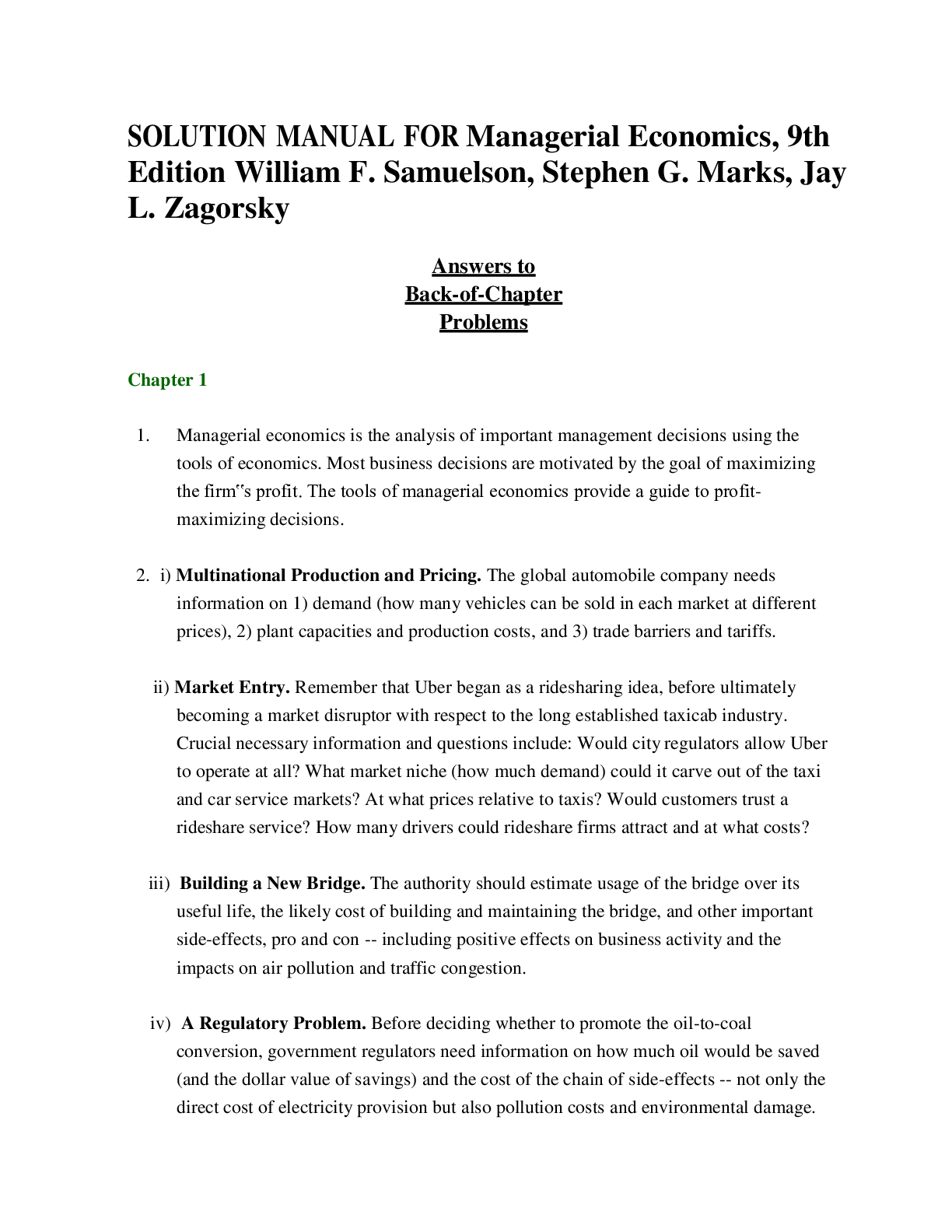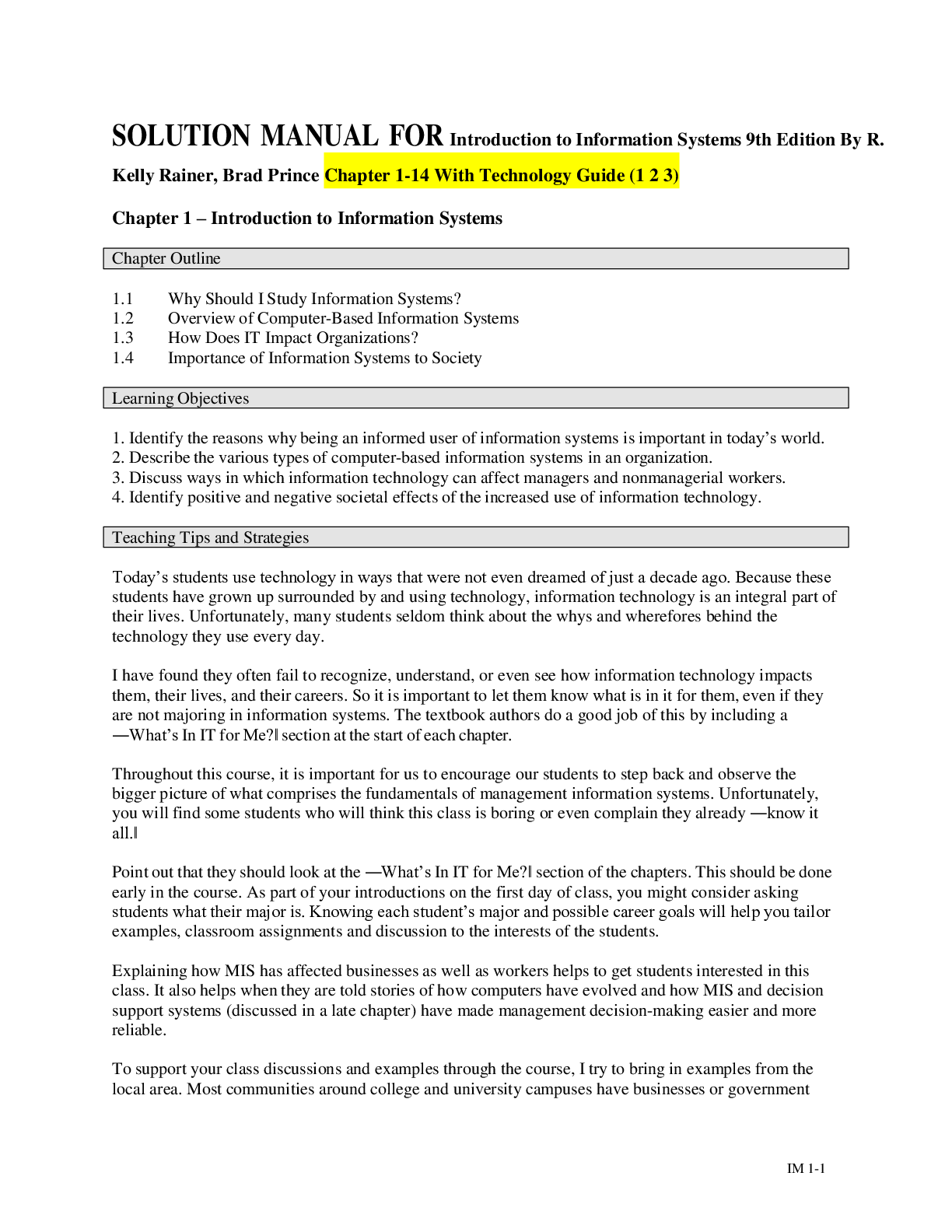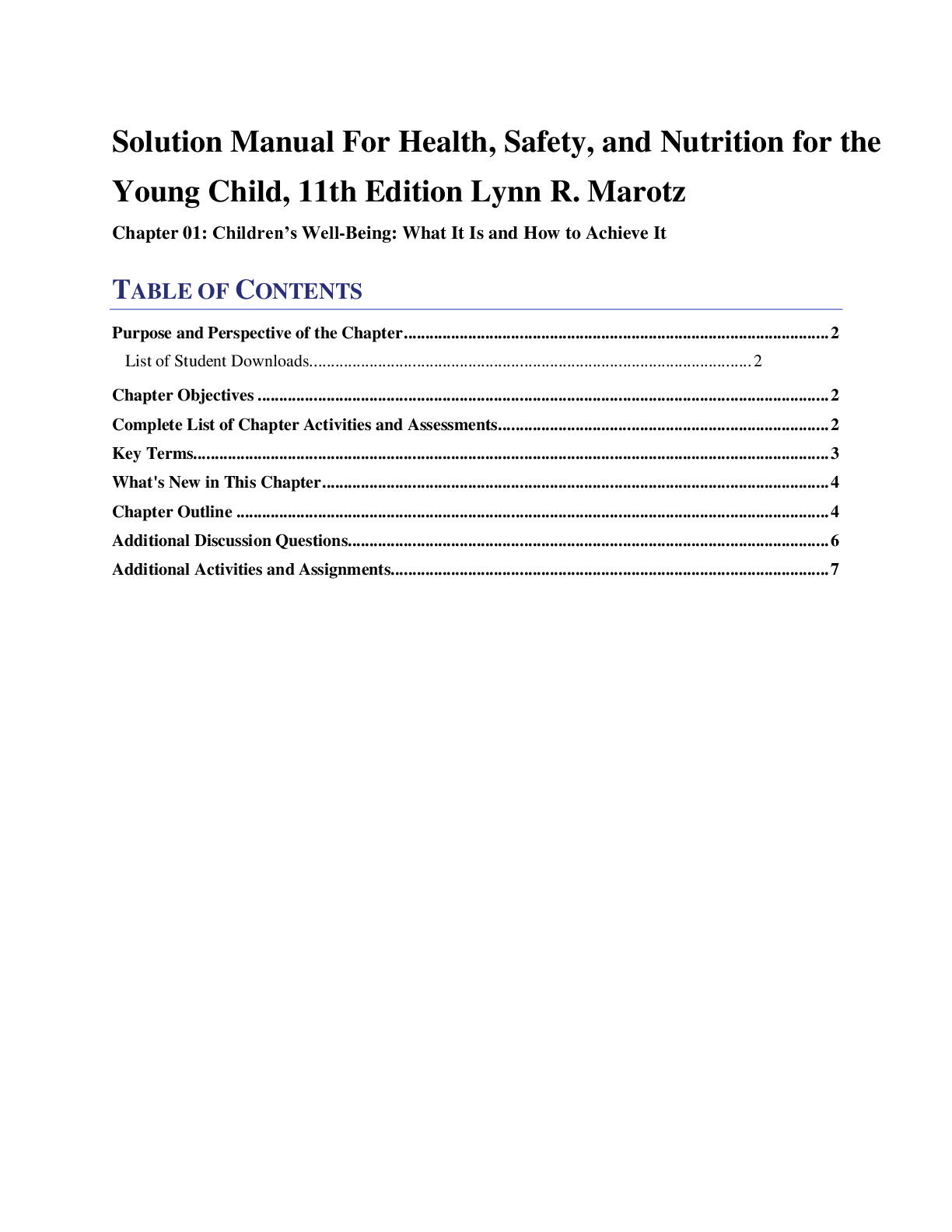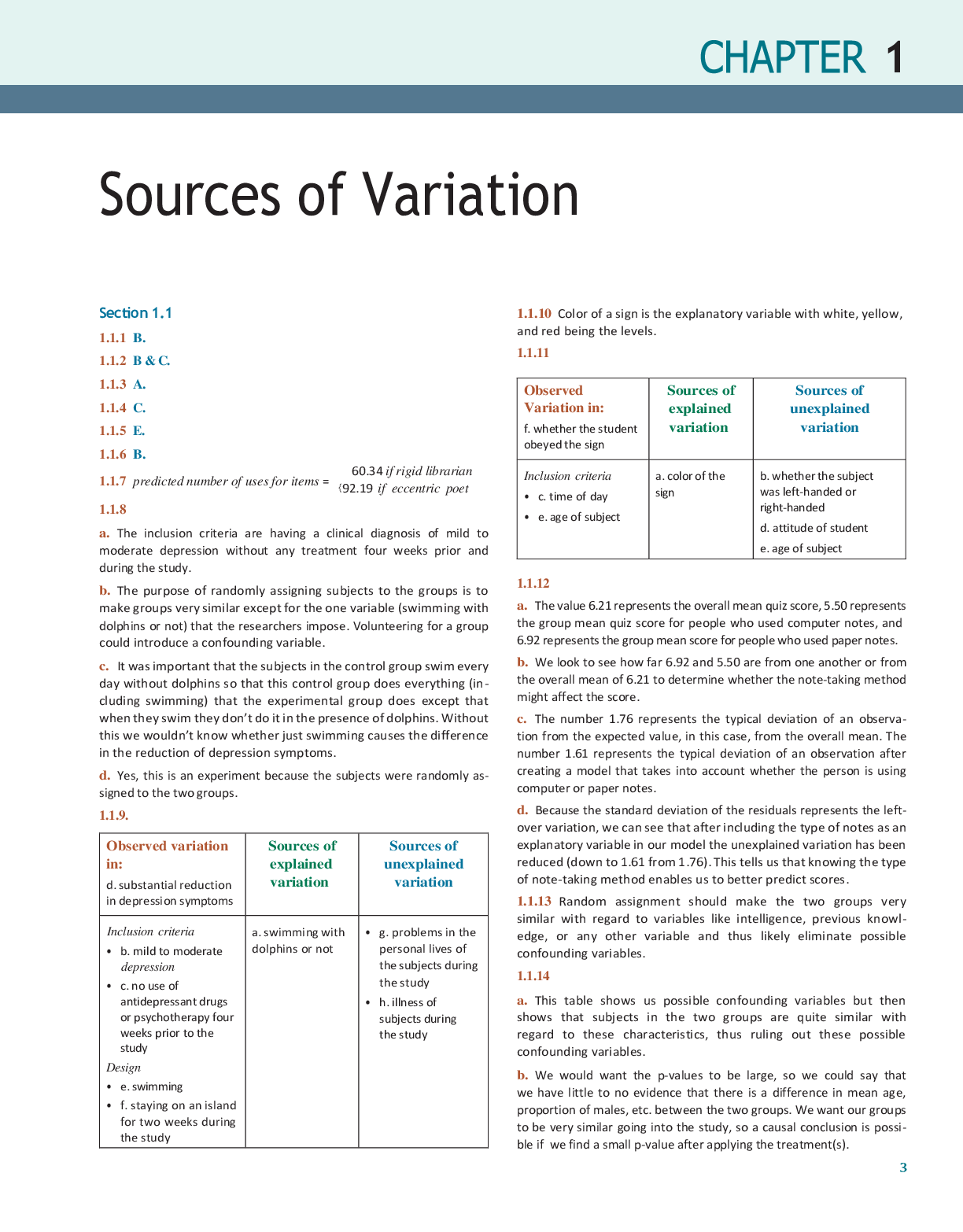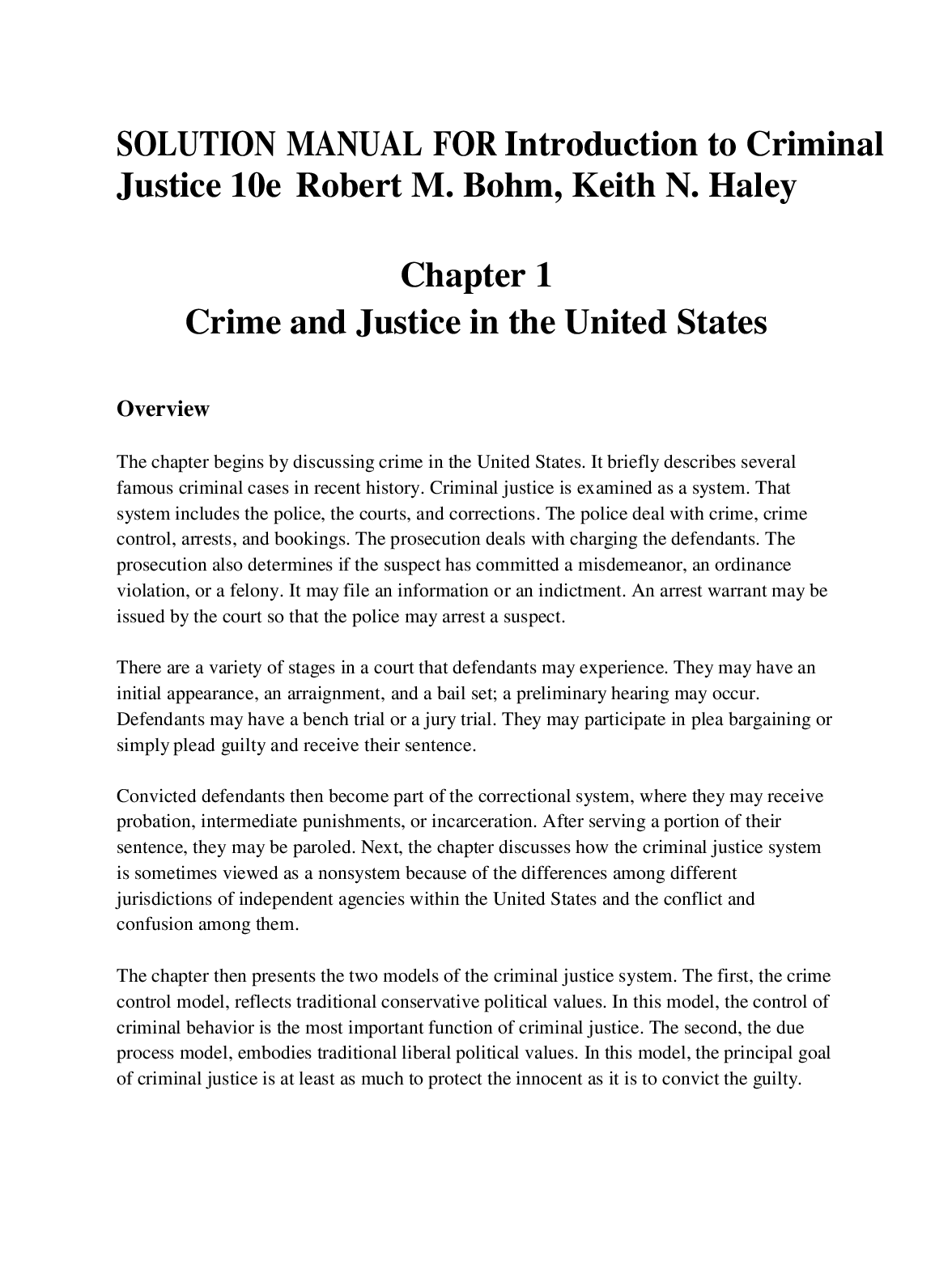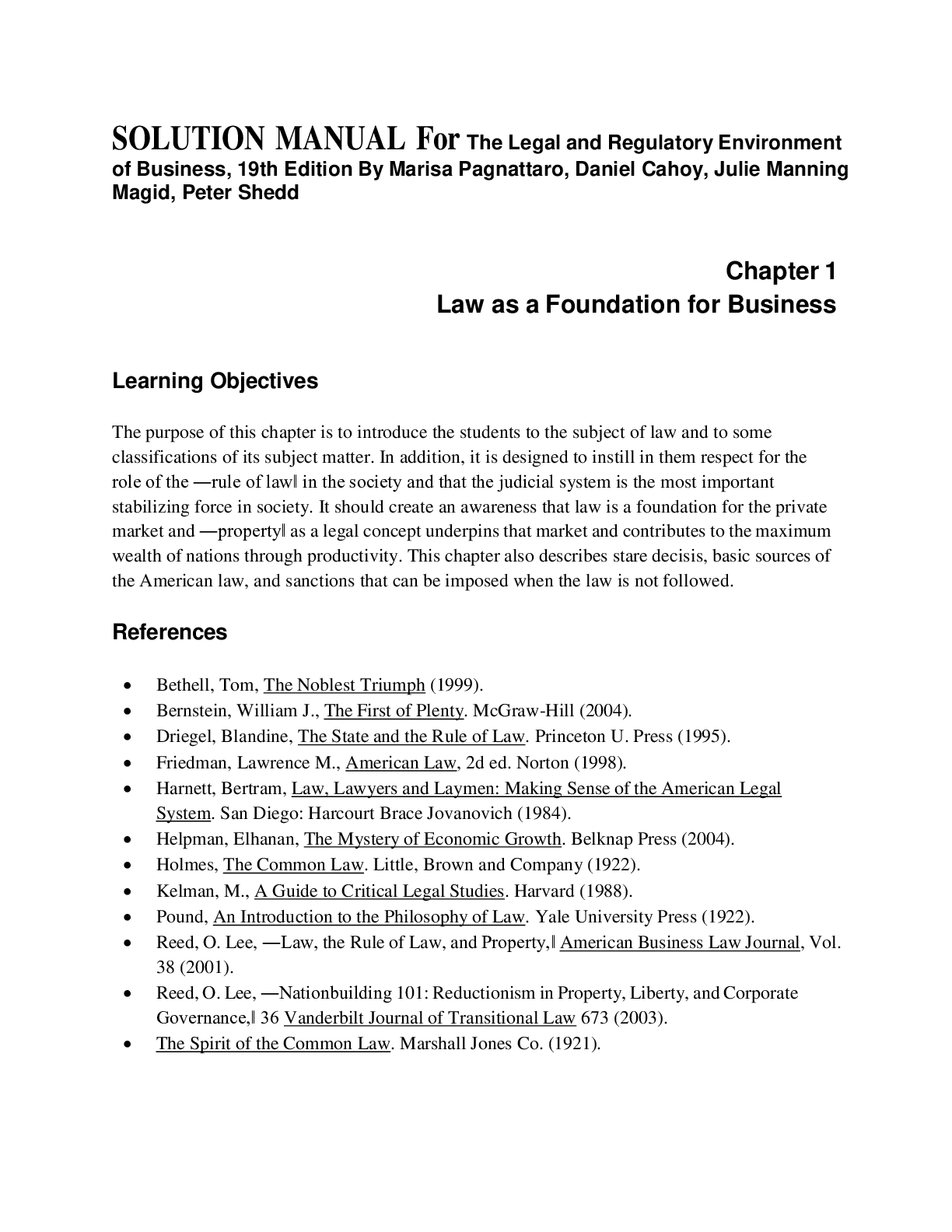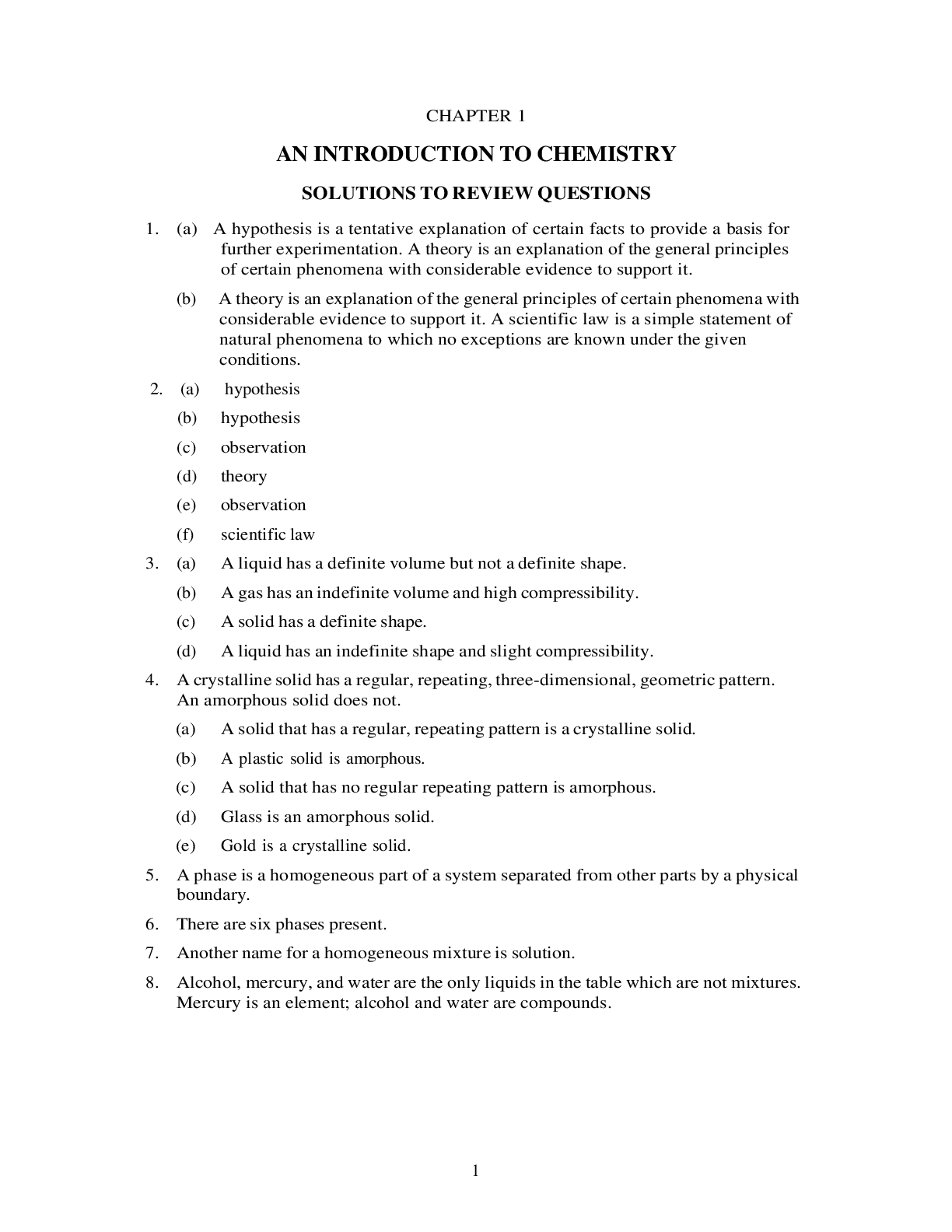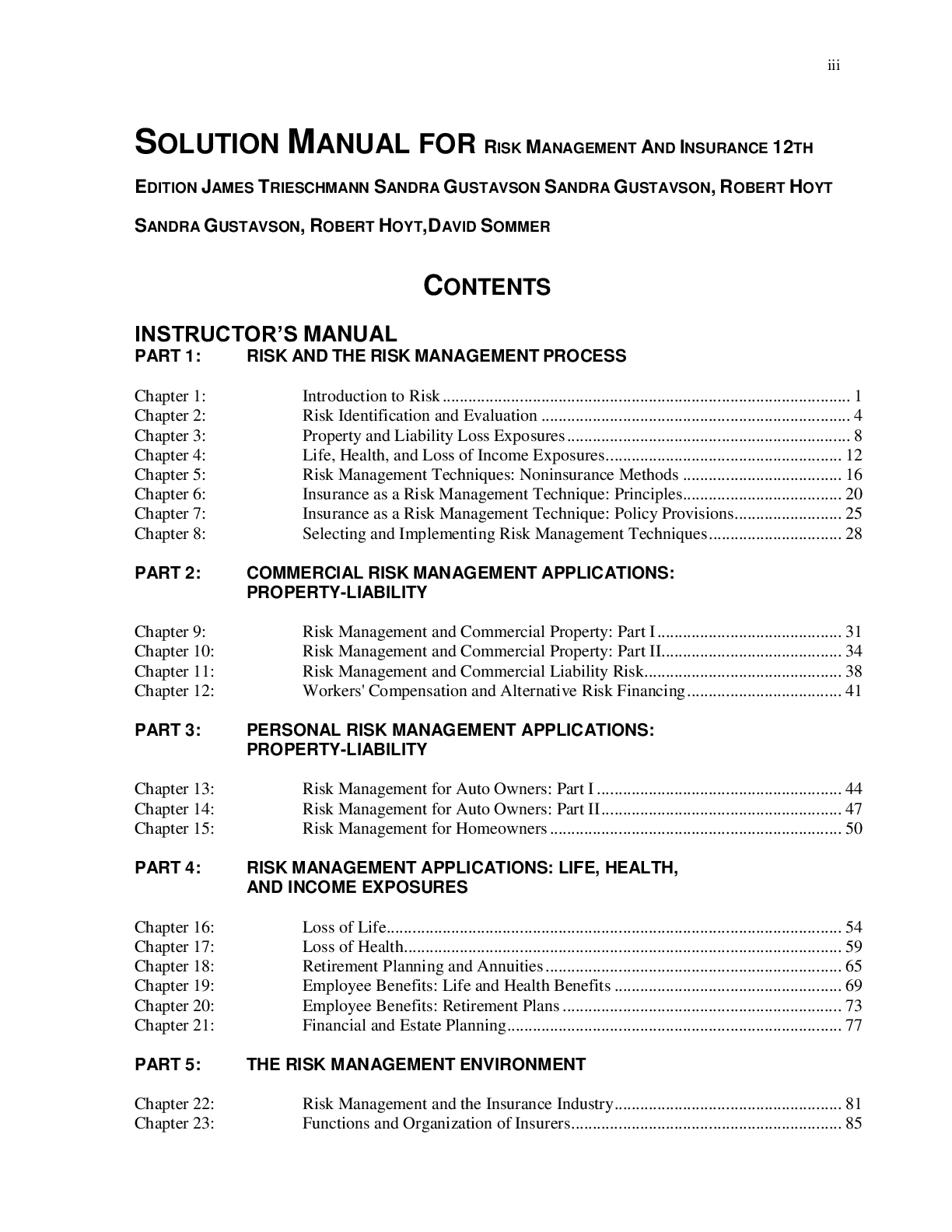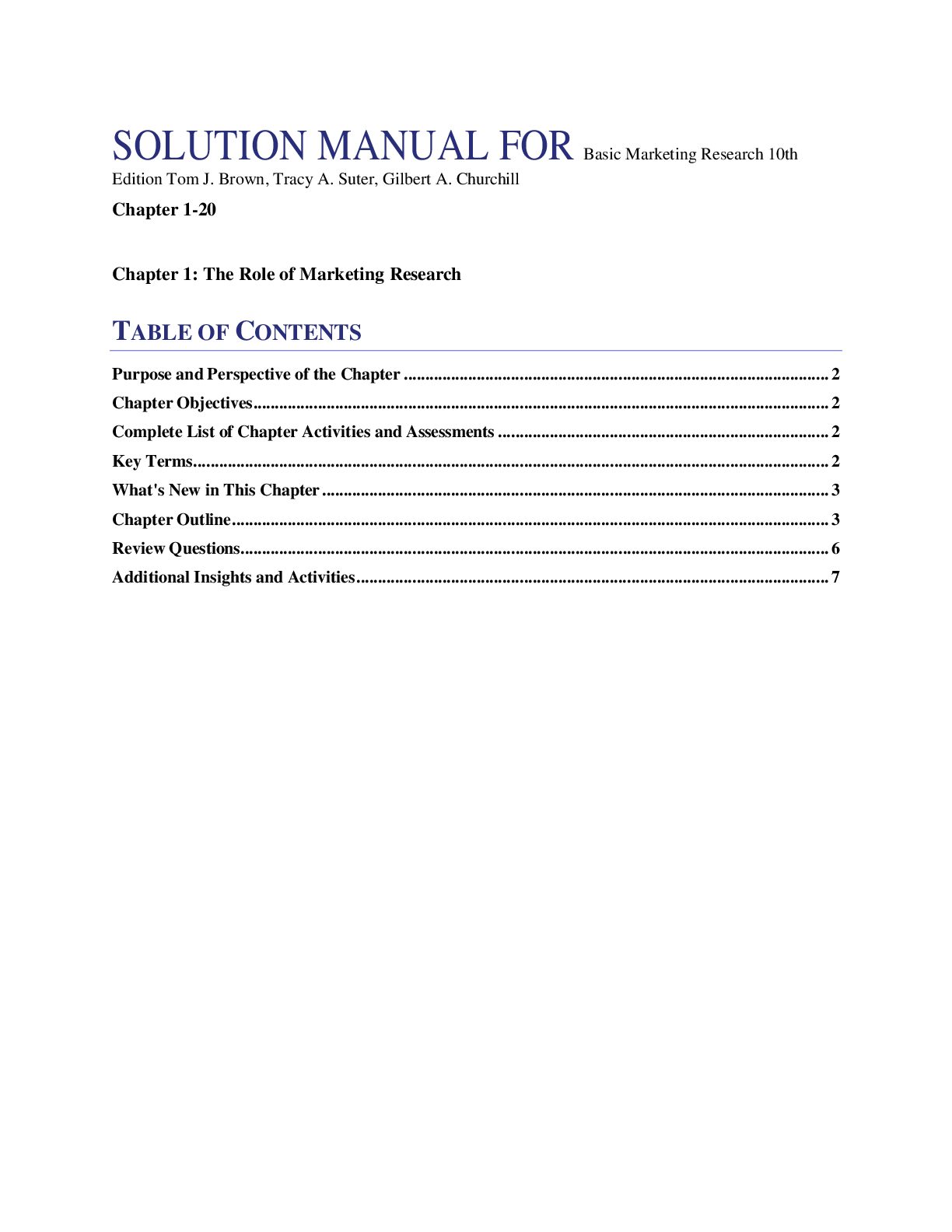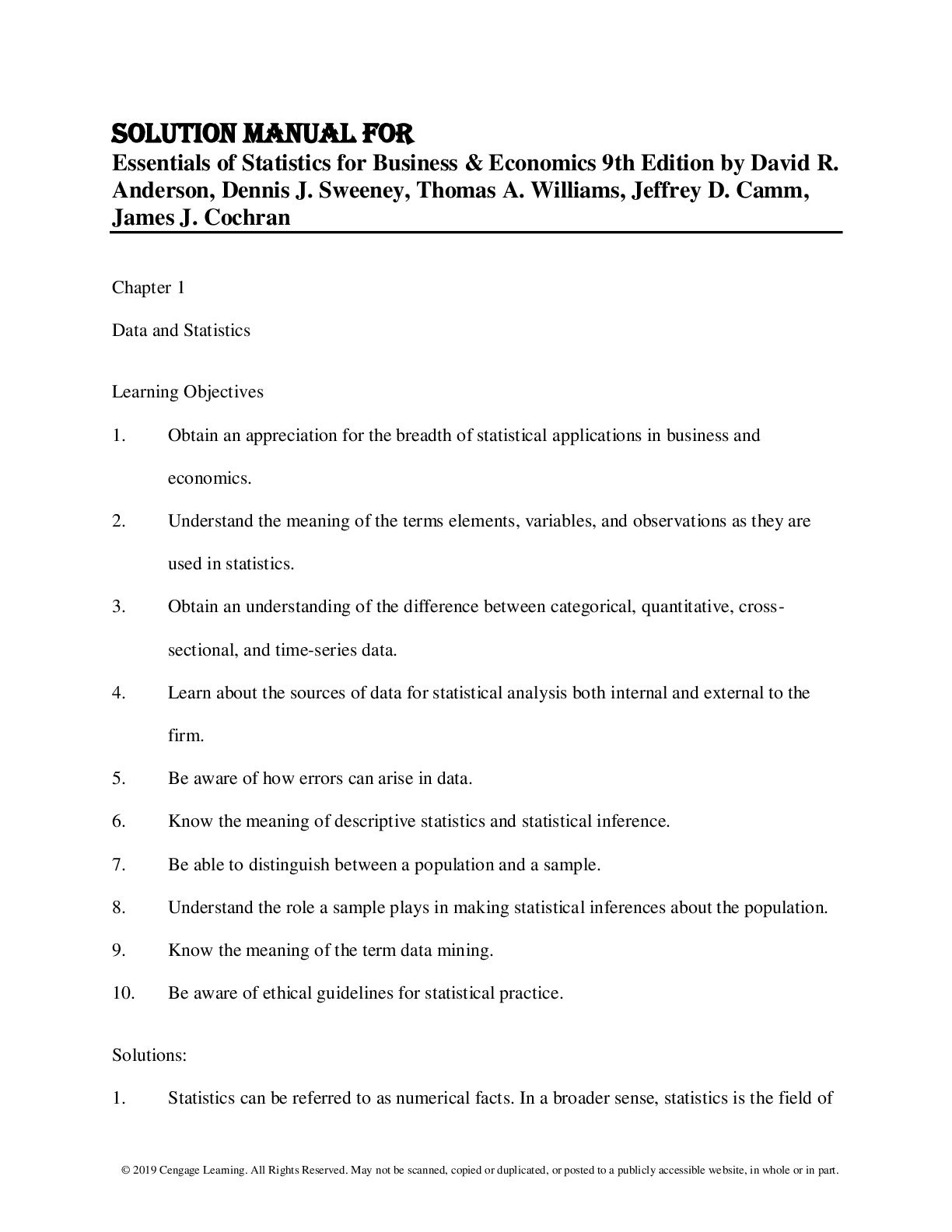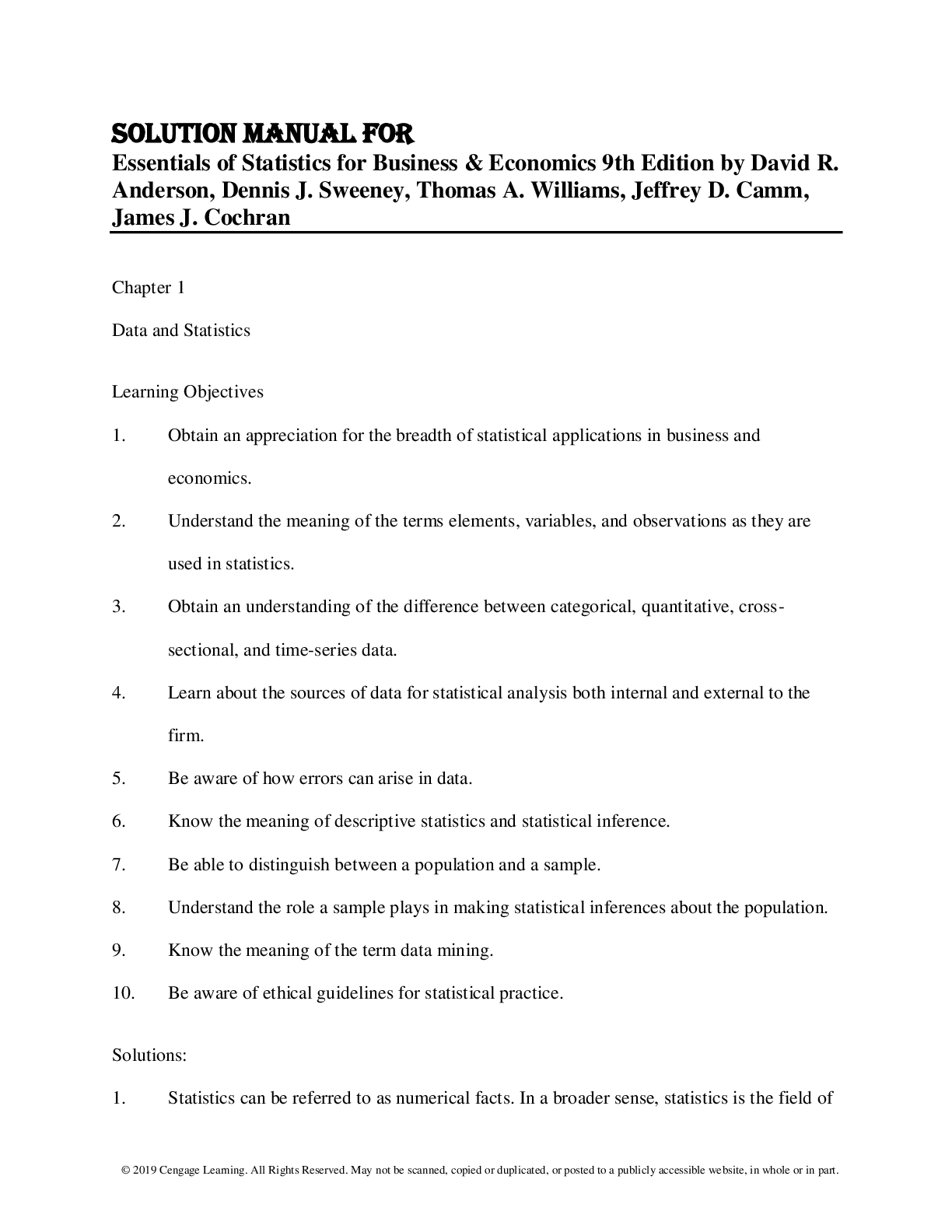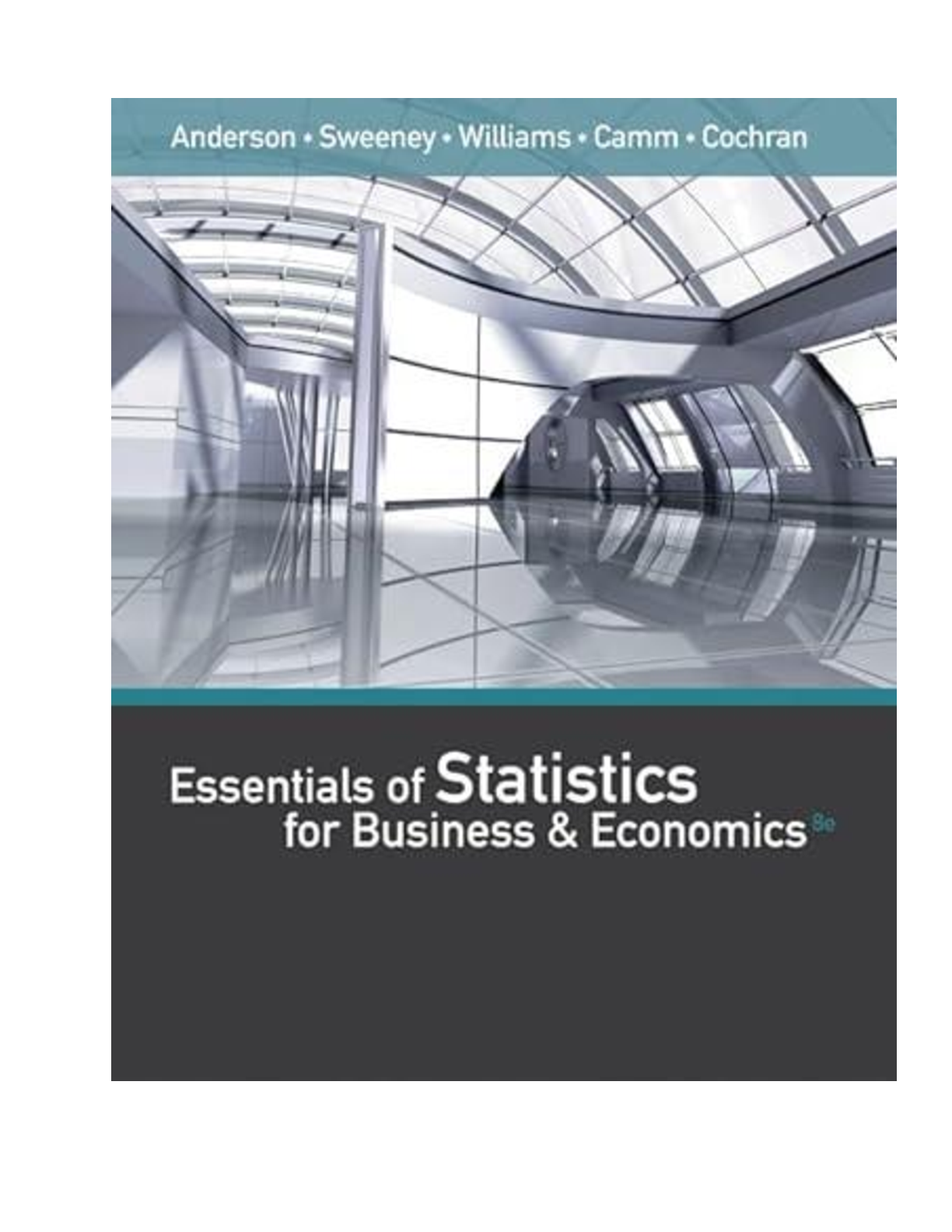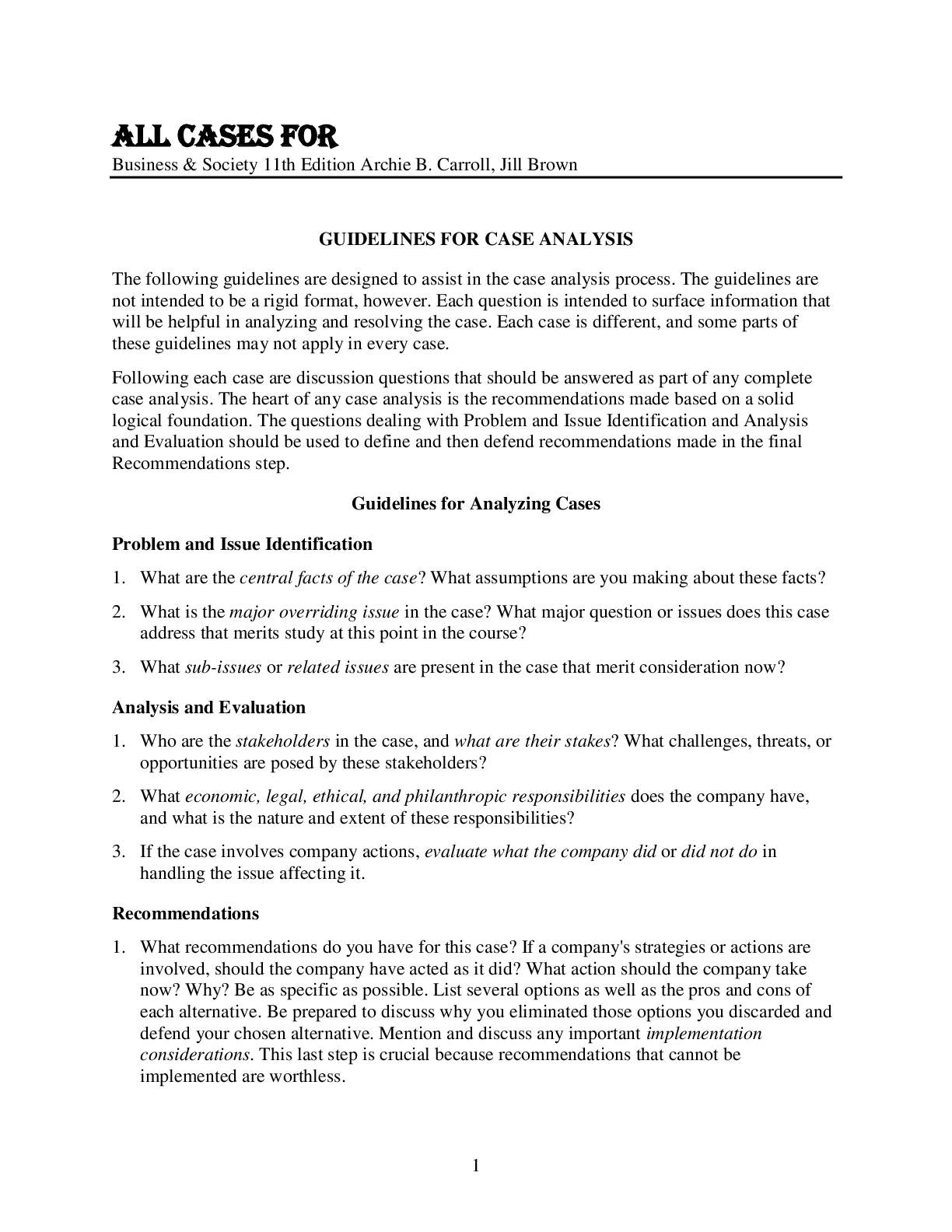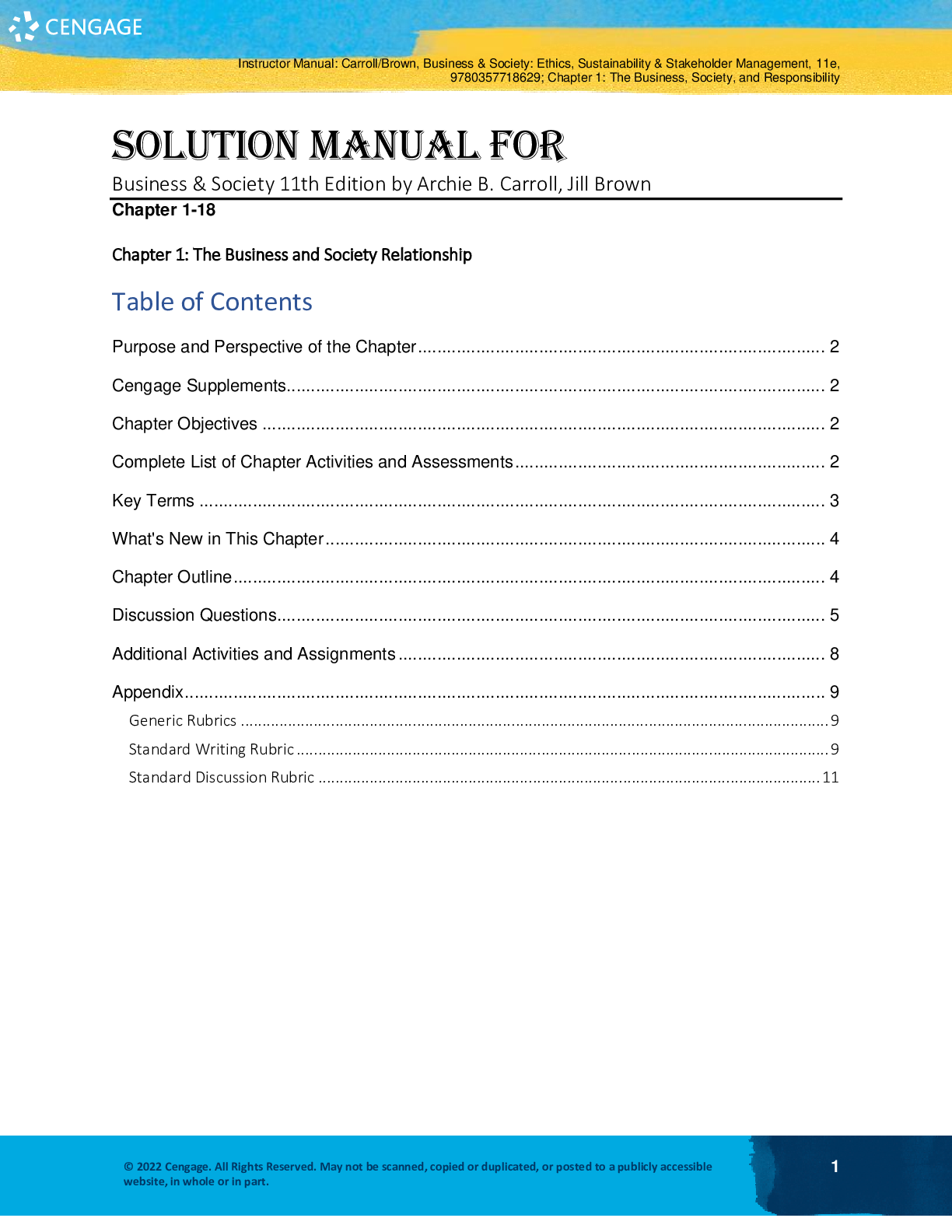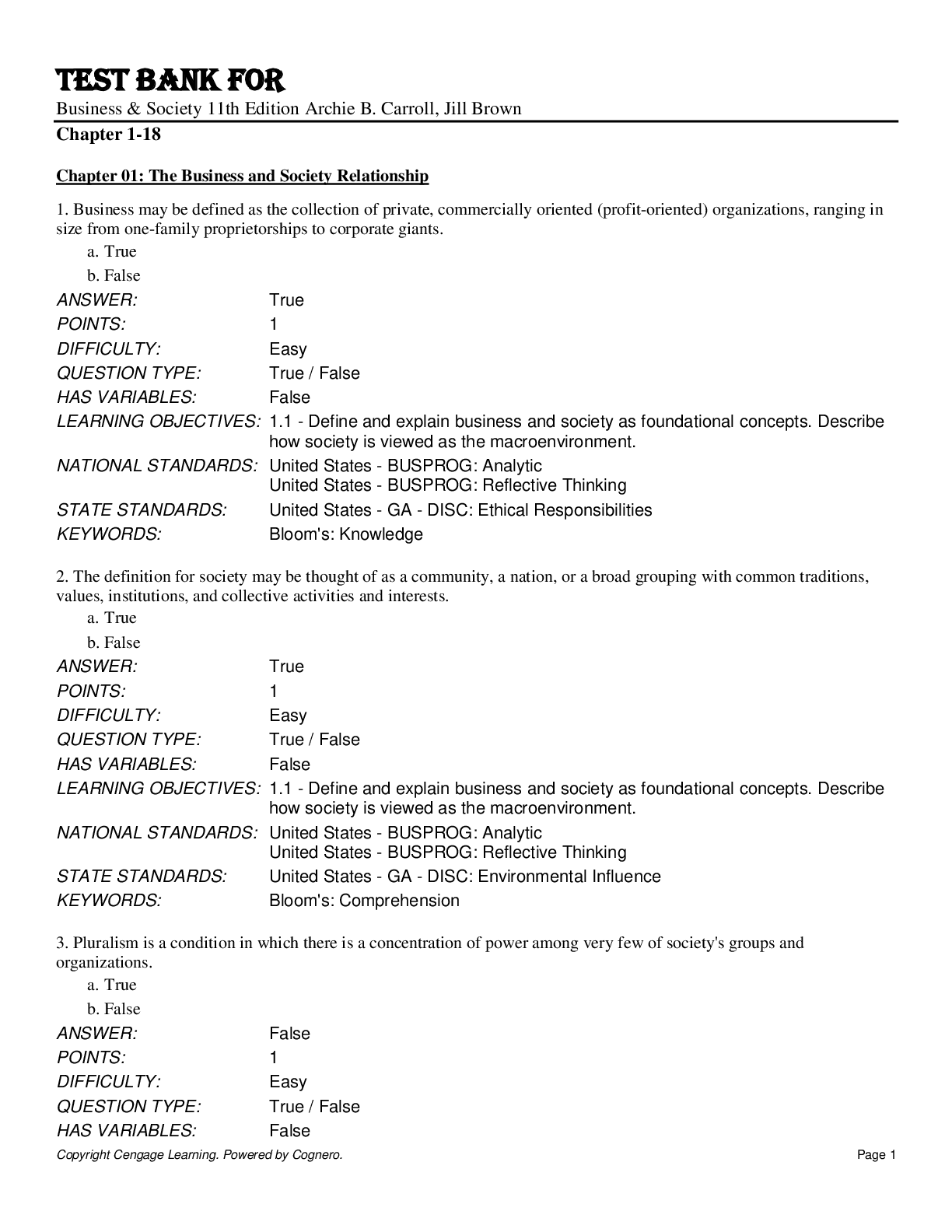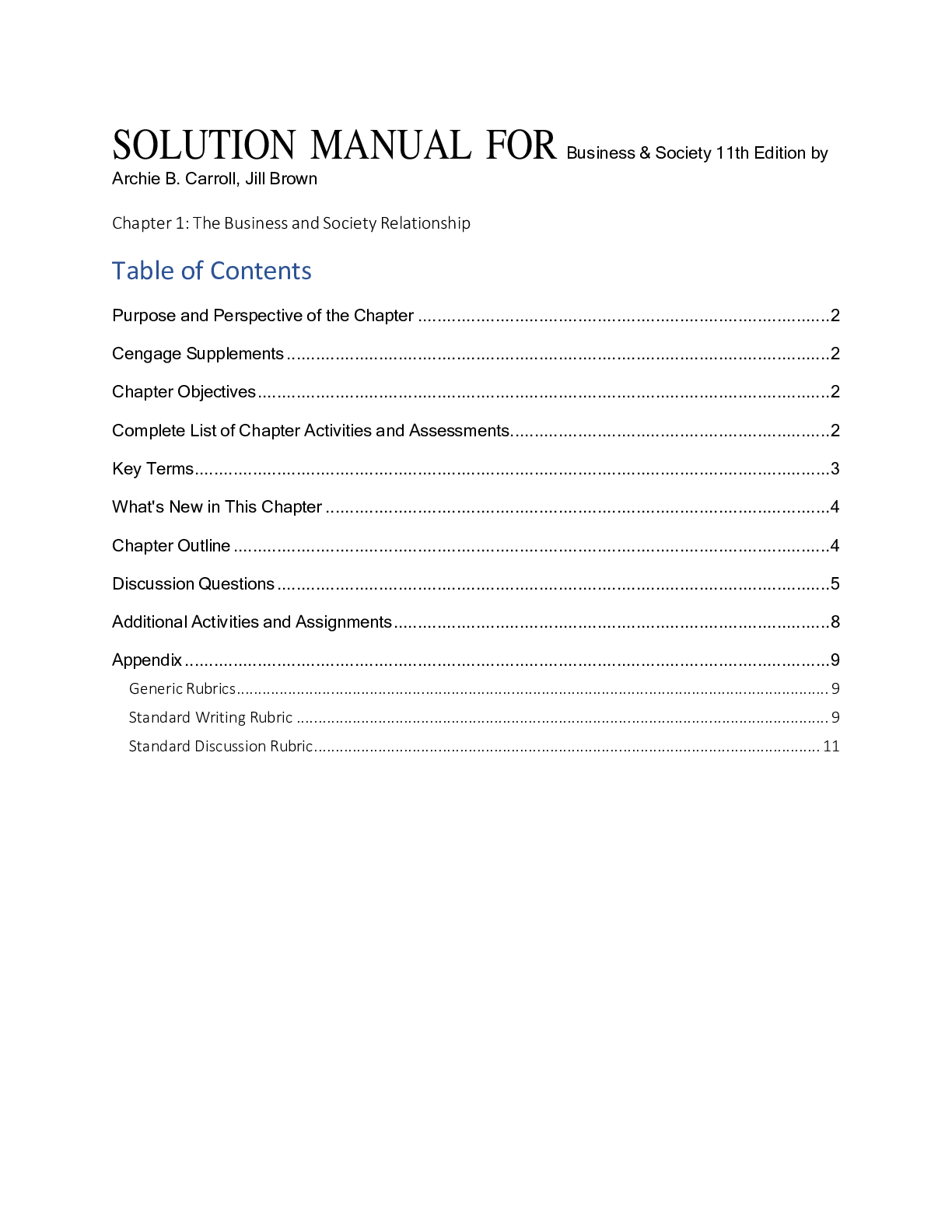Business > SOLUTIONS MANUAL > All Cases For Business & Society 11th Edition by Archie B. Carroll, Jill Brown, Answered (Solution M (All)
All Cases For Business & Society 11th Edition by Archie B. Carroll, Jill Brown, Answered (Solution Manual)
Document Content and Description Below
All Cases For Business & Society 11th Edition by Archie B. Carroll, Jill Brown, Answered (Solution Manual)-GUIDELINES FOR CASE ANALYSIS The following guidelines are designed to assist in the case a... nalysis process. The guidelines are not intended to be a rigid format, however. Each question is intended to surface information that will be helpful in analyzing and resolving the case. Each case is different, and some parts of these guidelines may not apply in every case. Following each case are discussion questions that should be answered as part of any complete case analysis. The heart of any case analysis is the recommendations made based on a solid logical foundation. The questions dealing with Problem and Issue Identification and Analysis and Evaluation should be used to define and then defend recommendations made in the final Recommendations step. Guidelines for Analyzing Cases Problem and Issue Identification 1. What are the central facts of the case? What assumptions are you making about these facts? 2. What is the major overriding issue in the case? What major question or issues does this case address that merits study at this point in the course? 3. What sub-issues or related issues are present in the case that merit consideration now? Analysis and Evaluation 1. Who are the stakeholders in the case, and what are their stakes? What challenges, threats, or opportunities are posed by these stakeholders? 2. What economic, legal, ethical, and philanthropic responsibilities does the company have, and what is the nature and extent of these responsibilities? 3. If the case involves company actions, evaluate what the company did or did not do in handling the issue affecting it. Recommendations 1. What recommendations do you have for this case? If a company's strategies or actions are involved, should the company have acted as it did? What action should the company take now? Why? Be as specific as possible. List several options as well as the pros and cons of each alternative. Be prepared to discuss why you eliminated those options you discarded and defend your chosen alternative. Mention and discuss any important implementation considerations. This last step is crucial because recommendations that cannot be implemented are worthless. Case 1: Walmart: The Main Street Merchant of Doom 1. What are the major issues in the case? What does Walmart’s experience tell you about the business and society relationship? The major issues in the case center on Walmart‘s expansion. The case focuses on the impact to the communities to which Walmart moves, from both environmental and economic perspectives. Walmart has been criticized for the aggressive and even predatory tactics that it takes with respect to local merchants. Competition is what drives Walmart, and a merchant who competes directly with them will lose. Is it unethical for any company, not just Walmart, to drive out all competition? Is Walmart using its size and ability to undersell small local merchants until they are driven out in order to establish an unfair monopoly on local markets? Is this a violation of the spirit of anti-monopoly laws? The Walmart experience tells us that business and society have a symbiotic relationship, that the fabric of a community is impacted dramatically by the entry of a company like Walmart, and that this fabric is sacrificed to poor working conditions, low wages, and lower-priced goods. 2. What happened to the ―Penney Idea,‖ Sam’s ten-foot rule, and the Buy America Plan? Were these discontinued over time, or did they fade away and get lost when Sam died? To fulfill a cost-cutting philosophy, many stores eliminated their famed greeters, and this opened the door to problems (increased crime) because one fewer deterrent existed. Walmart eventually abandoned the Buy American Plan and became one of the largest purchasers of products made overseas. In fact, the company in time became the country‘s largest purchaser of Chinese goods in any industry. 3. Assess Walmart’s corporate social responsibility using the four-part CSR model. Is Walmart socially responsible even though it has had a devastating impact on many small merchants and various stakeholder groups, and some communities do not want it? The following is an assessment of Walmart‘s corporate social responsibility using the four-part CSR model: Economic: Walmart‘s economic performance has been outstanding. According to the text, in the 2020 Fortune 500 listing, Walmart has held on to its #1 position in terms of revenues: $524 million. On a global scale, Walmart has more than 11,500 stores, and during the pandemic, its e-commerce went up by 74 percent. The year 2020 was a big year for Walmart as it continued to provide essential products and services for millions of citizens. The company grew its revenue by $35 billion, and its e-commerce business grew by triple digits. Its goal of providing quality merchandise at a low cost to consumers meets society‘s economic expectations for the company. Legal: Walmart‘s adherence to the laws of the country generally has been good, but an explosion of lawsuits by employees and other stakeholders is tarnishing the company‘s image in this area. As the world‘s largest employer and the largest nongovernmental employer, Walmart gets sued 20 times a day, close to 5,000 times every year. Many of these lawsuits are filed by its employees over employment discrimination issues or wage and hour claims, often regarding overtime. The most serious employee issues Walmart has faced in the past decades have been accusations of gender discrimination against women. More often than not, these lawsuits are settled out of court. According to Walmart‘s annual report for the year ending January 31, 2010, the company is a defendant in ―various cases containing class-action allegations.‖ The company notes that if these cases are ―decided adversely to [the company] or settled by [the company],‖ it could result in a material liability to the company and adversely impact the company‘s ―financial condition or results of operations.‖ In April 2010, the Ninth Circuit Court of Appeals, sitting en banc, upheld the class-action status in Dukes v. Wal-Mart Stores, Inc., a class-action lawsuit ―brought on behalf of all past and present female employees in all of our retail stores and warehouse clubs in the United States.‖ The certified class includes approximately 1.6 million individuals. In 2020, a new issue arose regarding Walmart‘s policies and practices on filling opioid prescriptions at its pharmacies. The U.S. Justice Department did accuse Walmart of helping to fuel the country‘s opioid crisis by insufficiently screening questionable prescriptions. Ethical: Walmart‘s internal policies have certainly been above the spirit of the law. Questions may be raised, however, about (1) the degree to which it has considered its impact on other small stores and merchants and on town culture, and (2) certain employment-related practices that have resulted in mammoth lawsuits for the company. Discretionary: Walmart‘s contributions to the local community, its Buy American program, and its recycling centers all speak to the positive aspects of societal expectations. At the time of this writing, Walmart has several corporate citizenship initiatives, including, among others, scholarships to high school seniors, fundraisers for The Children‘s Miracle Network Telethon, and environmental programs. In its 2020 Environmental, Social and Governance (ESG) Report, Walmart featured and summarized some of its recent goals and achievements: Walmart states that it prioritizes ESG issues that offer the greatest potential to create shared value. The company focuses on issues that are highly relevant to their business and stakeholders. However, Walmart is often criticized for the predatory practices it uses against local merchants, its lack of sensitivity to community needs when a store is closed, and to community culture. 4. What about Walmart’s impact on communities in terms of sprawl, traffic congestion, and impact on the appearance of the environment? What responsibility, if any, does the company have to the communities it enters? Walmart has been condemned for its impact on communities in terms of sprawl, traffic congestion, and appearance of the environment. The website Wal-Mart Watch (http://walmartwatch.com) notes that Walmart‘s entry into new communities results in abandoned retail space, increased traffic congestion, and dead and decaying areas in such communities. As noted, questions may be raised about some of Walmart‘s practices and effects described in the case. Walmart‘s responsibility to community merchants could extend to the point that Walmart should teach them how to complete with, not against them. Predatory competition designed by department managers to increase store sales should be stopped and punished if necessary. 5. Sam Walton has been called a motivational genius. After reading this case, and with what you have observed at your local Walmart store, do you think his motivational genius is still felt by associates? What is the ―Walmart Way‖? How would you characterize the store’s culture now that Sam is no longer around? Sam motivated the associates by giving them the responsibility and the credit for Walmart‘s success. He gave them ownership in the company through stock options. He posted the stock price daily and pointed to it often. He held weekly videoconferences with all the stores explaining new ideas, promotions, and products. He included the associates in the decision- making process. However, now that Sam Walton has died and Walmart has morphed into a mega-industrial giant, the culture arguably has changed. While the focus on customer satisfaction and low prices was once perceived as consumer (and perhaps community) friendly, now many associate low prices with social and economic injustice (the opposite of Sam‘s original intentions). Further, management‘s emphasis on corporate numbers has led to employee lawsuits that could have a material impact on the company in the long run. When one visits a Walmart store you rarely get the sense that employees are engaged and are part of a positive culture. Apart from the famed ―Walmart greeters,‖ there seems to be little in the way of a corporate identity that indicates a culture that values its employees. [Show More]
Last updated: 9 months ago
Preview 5 out of 64 pages

Loading document previews ...
Buy this document to get the full access instantly
Instant Download Access after purchase
Buy NowInstant download
We Accept:

Reviews( 0 )
$14.50
Can't find what you want? Try our AI powered Search
Document information
Connected school, study & course
About the document
Uploaded On
Sep 30, 2024
Number of pages
64
Written in
Additional information
This document has been written for:
Uploaded
Sep 30, 2024
Downloads
0
Views
28

